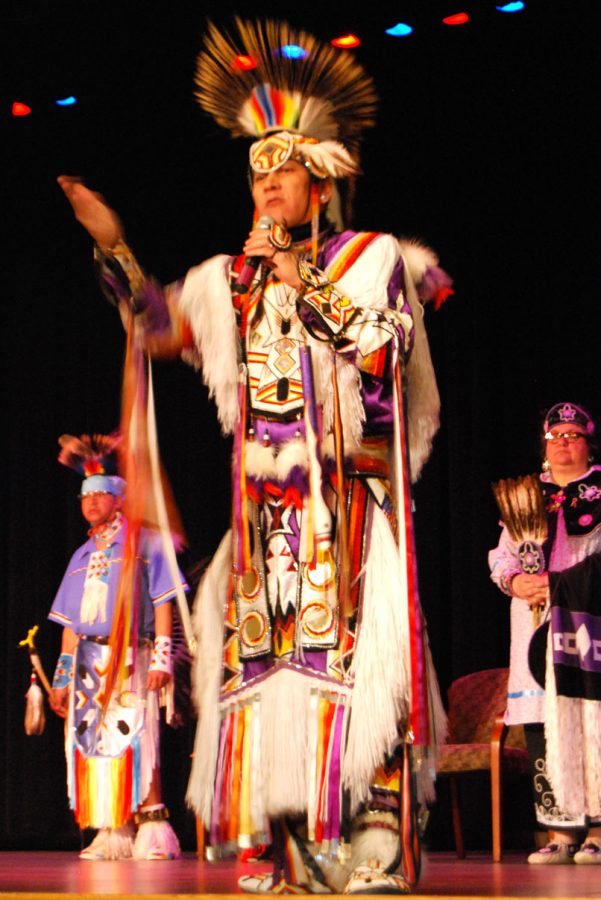March 19, 2014
By Alexandria Zamecnik
During pow-wows, Native Americans wear traditional clothing depending on which tribe their ancestors belonged to.
San Carlos Apache tribesmen Ronnie Preston wears bear claws in representation of the spirit that he said still dances with him every day.
Preston, a member of the Milwaukee Native American Dance Troupe, which consists of five different Native Americans who hail from three separate tribes, visited UW-Whitewater on March 11 to explain the significance of pow-wows.
Pow-wows have traditionally been defined as gatherings of North American natives. Modern pow-wows, however, now serve as a method of socialization, Preston said.
“Pow-wows are a way to gather, make new friends, greet old friends, sing songs, dance and taste other Native American foods,” Preston said.
The troupe’s colorful attire, commonly known as regalia in the Native American community, is hand-crafted. The regalia changes according to tribe location.
Northern tribes based in the Midwest produce regalia with modest colors and thicker layers to represent the colder weather, while southern tribes create vivid colors and shapes to represent the warmth.
Preston said he was taught how to dance and sing in pow-wows at a young age.
“We start children out as soon as they can walk,” Preston said. “We get them in regalia as soon as it fits and teach them how to sing and dance.”
The most important part of a pow-wow is the drum, Preston said.
“The drum is called the heartbeat of Mother Earth,” Preston said. “This is very important to Native Americans. Without the drum, you can’t have a pow-wow.”
More than a year ago, Mai Yer Yang, student services coordinator at Career & Leadership, decided to host the Native Pride lecture series because she said that’s what the students wanted.
“We wanted to do the pow-wow because people think of it as a dance, but it is actually more than that,” Yang said. “I want students to appreciate the native culture and really understand the meaning of a pow-wow.”
The Milwaukee Native American Dance Troupe displayed several different types of dances for the audience. Each dance had a different meaning.
The men and women shared the largest difference.
“When warriors went to battle, the women would dance for their men,” Preston said. “They would dance in the four cardinal directions waiting for the return of the men. They would dance until their significant other came home.”
The men’s traditional dances mimic the jobs they would have had in earlier years. They would imitate themselves during the act of battle, hunting or collecting firewood.
Men dance with sharp and on-point moves, while the women have more freedom and flow with their moves.
Some students were asked to attend the event for class credit. Others went for a new experience.
Marlee Whiteside, sophomore and Media Arts & Game Development major, said she mostly went because of class, but she didn’t have to.
“There’s always the option to come in, sit down and sign your name,” Whiteside said. “However, I think it’s important to see different diversity and how people embrace it.”
Whiteside said she is originally from Idaho and has not had the chance to embrace different cultures.
“I wanted to learn something that I didn’t know,” Whiteside said. “It’s nice to see the culture.”


